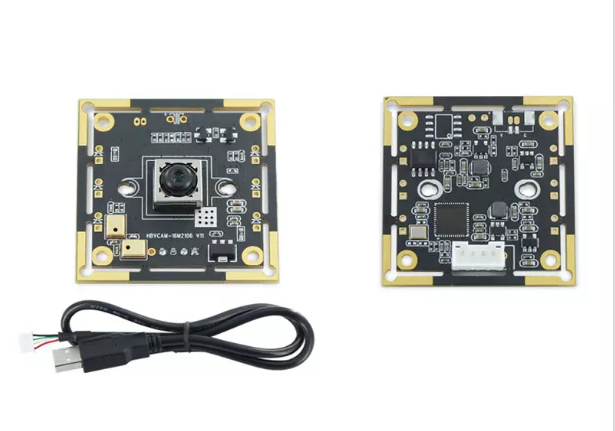USB Camera Module Specifications
USB camera modules are compact camera devices that connect to computers, laptops, or other devices via a USB interface. These modules come with various specifications that determine their performance, image quality, and compatibility with different applications. In this news, we will explore the key specifications of USB camera modules to help you understand their capabilities and make informed decisions when choosing the right module for your needs.

Resolution:
Resolution refers to the number of pixels that a camera can capture in an image or video. It is one of the most important specifications that determine the level of detail and clarity in the captured content. USB camera modules are available in a range of resolutions, from standard definition (SD) to high definition (HD) and even ultra-high definition (UHD) resolutions. Common resolutions include 720p, 1080p, 4K, and beyond. Higher resolutions provide more detailed images, but they also require more processing power and storage capacity.
Frame Rate:
The frame rate represents the number of frames per second (fps) that a camera can capture. It affects the smoothness and fluidity of motion in video recordings. USB camera modules typically offer a range of frame rates, and the optimal frame rate depends on the intended application. For video conferencing or standard recordings, frame rates of 30 fps or lower may be sufficient. However, for fast-moving subjects or applications that require high-speed imaging, higher frame rates, such as 60 fps or even 120 fps, are desirable to capture smooth and clear motion.
Sensor Type:
The sensor is the component of the camera that captures light and converts it into an electrical signal. USB camera modules can feature various sensor types, including complementary metal-oxide-semiconductor (CMOS) sensors and charge-coupled device (CCD) sensors. CMOS sensors are widely used in USB camera modules due to their lower power consumption, lower cost, and higher readout speeds. They offer good image quality and are suitable for most applications. CCD sensors, on the other hand, are known for their superior image quality and sensitivity, making them ideal for applications that require high image fidelity, such as scientific or professional imaging.
Lens Options:
USB camera modules often come with interchangeable or fixed lenses. Interchangeable lenses allow users to switch between different focal lengths and adjust the field of view according to their needs. This provides flexibility and versatility in capturing different types of shots. Fixed lenses, on the other hand, are permanently attached to the camera module and offer a fixed field of view. The choice between interchangeable and fixed lenses depends on the specific application and the desired level of control over the captured image.
Connectivity:
USB camera modules connect to devices via USB interfaces, but the specific USB version and connector type can vary. USB 2.0, USB 3.0, and USB 3.1 are common versions used in USB camera modules. USB 3.0 and USB 3.1 offer faster data transfer rates compared to USB 2.0, enabling higher-resolution and higher frame rate captures without sacrificing image quality. It is essential to ensure compatibility between the USB camera module and the USB ports on the target device to achieve optimal performance.
Compatibility:
USB camera modules should be compatible with the operating system and software applications used for image capture, recording, or processing. Most USB camera modules are designed to work with popular operating systems like Windows, macOS, and Linux. Additionally, they may have compatibility with specific software development kits (SDKs) or libraries that provide advanced features and functionalities. It is crucial to check the compatibility of the USB camera module with the intended software environment to ensure smooth integration and optimal performance.
Additional Features:
USB camera modules can come with various additional features and functionalities. Some common features include auto-focus, auto-exposure, white balance adjustment, image stabilization, low-light sensitivity, and noise reduction. These features enhance the overall image quality and provide flexibility in adapting to different lighting conditions and shooting scenarios.
When selecting a USB camera module, it is important to consider the specific requirements of your application. Assess the desired resolution, frame rate, sensor type, lens options, connectivity, compatibility, and additional features that will best suit your needs. Additionally, it is recommended to consult the manufacturer's specifications and technical documentation for detailed information and to ensure the chosen module meets your expectations.
511
0
0



Comments
All Comments (0)